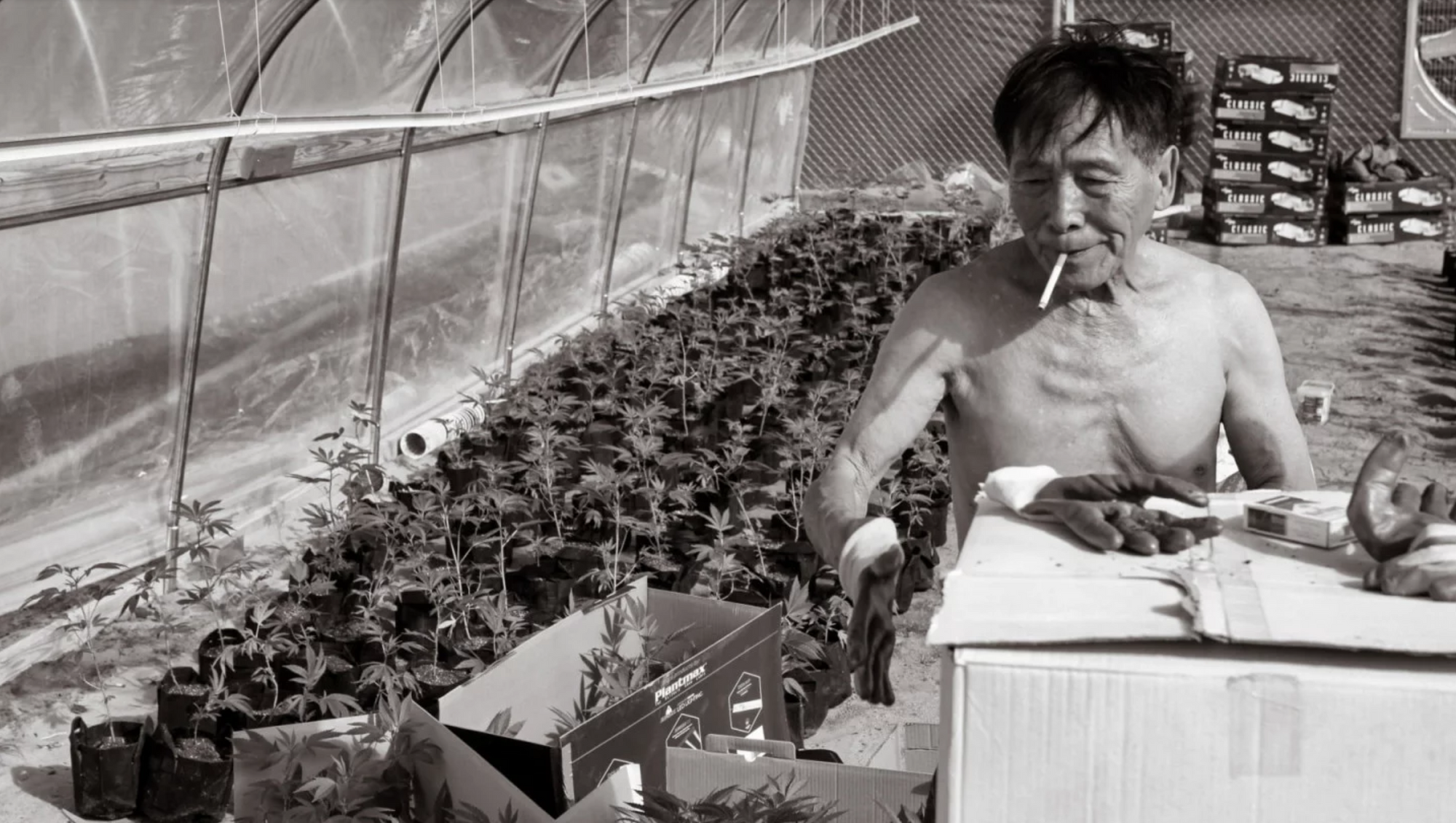This is the fourth in a series by Bec Sloane, spotlighting experiences of migrant and immigrant farmworkers in the U.S. amid the COVID-19 pandemic.
Mockery, blame and prejudice have loomed over Asian Americans throughout this pandemic, andplagued our country long before COVID-19 ever arrived. Like the virus, they spread rapidly through air, and reveal themselves by dint of myriad repercussions.
Influencers simultaneously insult, adopt and profit from Asian cuisine while anti-China rhetoric has led to harassment and closures of Chinese establishments. Patients reel away from already burdened healthcare workers, suspicious of their East Asian roots. Unemployed service workers are being conned into exploitative marijuana farming.
Asian hate crimes have amplified though their coverage has not, and the word “Chinaman” is still yelled in the street. Do you hear it?
“There’s this feeling that there's excess death out there.”
Latin American and Chinese migrants share a unique landscape of circumstances and vulnerabilities - down to their arduous journeys into the country, capitalized on by coyotes and “snakeheads”, respectively.
The many dialects among their communities, and what that represents, is lost on many and incites exploitation. Insufficient translation leaves ethnic minorities at critical disadvantages, and proper health and safety information out of reach.

“You simply cannot look at Asian Americans as a monolithic group,” notes Harvard lecturer, Jarvis Chen, “You’re going to miss how different communities experience the pandemic.”
In his searing Deadly Discrimination series, Marco della Cava calls out the role of the model minority myth in diluting the plight of Asian communities, linking the high rate of COVID-19 deaths in San Francisco to the myth’s “corrosive and distorting effects”.
“Our elders are off limits.” - Leslie Wiser, Radical Family Farms
2020 marked the worst year for U.S.-China relations in nearly fifty. At its helm was former President Trump with his onslaught of Sinophobic rhetoric, seizing China as a convenient scapegoat to relieve “emotional stress” and economic ills of those who felt overlooked.
Trauma inflicted upon Asian American and Pacific Islander communities as a result has devolved from a lack of support for businesses to assaults on the elderly. In Asian cultures, respect for elders is paramount; their abuse is unfathomable.
That these occurrences spill into a new year, regardless of administration, is troubling. Asians remain largely absent from coverage revolving around hate crimes and immigrant injustices.
“Othering” of Chinese immigrants is deeply ingrained in our country’s soil, dating back to the 1850s. Many false notions, i.e. food as dirty or disease-laden, stem from xenophobic fears of white workers blaming Chinese immigrants for their economic woes.
That this threat is still felt, and that these behaviors have found shallow enough water from which to resurface, is a reflection of what little progress we have made.
"They're bringing in people like worker bees.”
Casting nets of vague, alluring offers via WeChat, LA-based “agencies” tap into pools of Chinese service workers unemployed by COVID-19. Snakeheads, demanding fees up to tens of thousands, have no qualms accepting family homes or ancestral farmland as collateral.
And in some cases, growers cover costs of immigrants coming from China in exchange for work in the grow houses, an arrangement likened to indentured servitude and labor trafficking.
Crediting the irresistibility of “a golden ticket”, trafficking expert Erin Albright sums up the dilemma. “It could mean the difference between destitution and economic survival. It could also mean they end up getting exploited and trafficked. Either way, they don’t have much choice.”
The deployment of Chinese farmworkers among hemp fields in the southwest has most recently been brought into light by a lawsuit drawn up by Navajo Nation, alleging that the crop is being illegally cultivated in the protected region.
In November, federal agents discovered 36 Chinese farmworkers amid the operations on Navajo land. They were sleeping on the floors of greenhouses, disoriented and nearly starving. Most had not been paid, despite 12-hour day, 7-day weeks processing marijuana. Some had been shot at by protesters over the violation of land traditionally used for sacred crops.
Like many migrant injustices occurring on U.S. farms, the exploitation is not as visible to outsiders as other types of labor abuse. “These growers can hide in plain sight.”
Forever foreigners.
Anti-Asian sentiments emerge throughout every chapter of America’s past. Despite their labor and contributions, narratives painting Chinese immigrants as diseased or dirty were fuel for the Chinese Exclusion Act of 1882.
When the Bubonic plague was first identified in San Francisco’s Chinatown in 1900, Chinese Americans and other immigrants were quarantined, while white residents and visitors were not. This othering persisted amid the “Asian Flu” of 1957 and SARS epidemic of 2003.
But we can also draw from history examples of stepping up for our neighbors, and work to make this a new dominant narrative.
“Our deepest need, as human beings, is to keep developing our natural and acquired powers to relate to other human beings.” - Grace Lee Boggs
In 1903, the Japanese-Mexican Labor Association turned down fellowship from the American Federation of Labor, who refused to recognize their Japanese members. In ‘65, Larry Itliong sought out Cesar Chavez and a way to unite Filipinos with Latin Americans in a joint cause that grew to a march of 10,000 strong.
At the start of the SARS outbreak, the CDC deployed a community outreach team to document and monitor acts of discrimination to “educate individuals about unjustified fears.”
“Increasing social cohesion and collaboration in a time of social distancing, require acknowledging interdependence with one another.”
Cover illustration: Illustration: George F. Keller (The San Francisco Illustrated Wasp, 1878)

